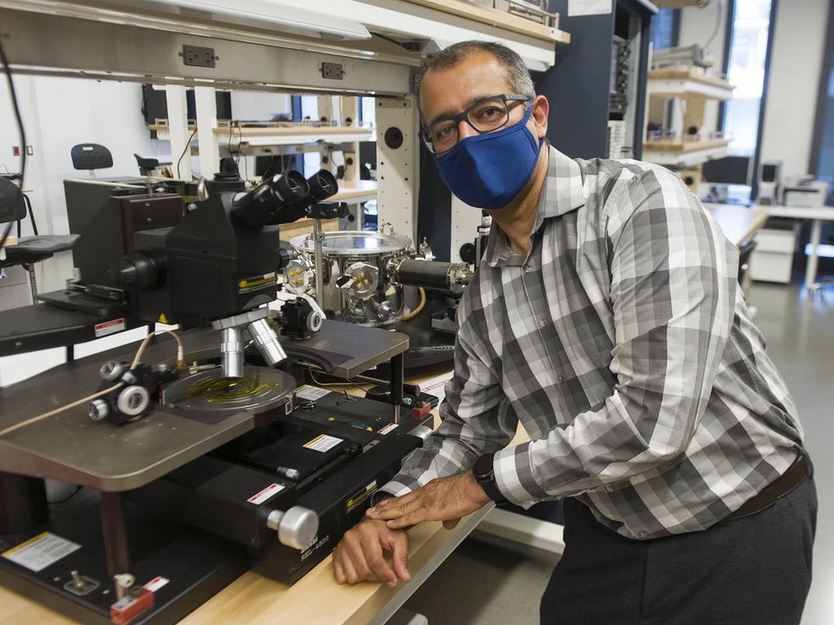In 2018, Ultra Electronics Maritime Systems in Halifax asked the Simon Fraser University engineer for help: The company wanted a better way to detect underwater threats. They asked if it would be possible to replace hydrophones – microphones that detect sound waves under water – with accelerometers that could detect the forces produced by sonar signals.
Accelerometers are ubiquitous sensors that measure gravitational forces and are used to detect orientation in cell phones or rapid decelerations in cars to deploy air bags. Under water, they could provide information on both the magnitude and the direction of the sonar signals, making it easier to find the source.
“The application required a strict set of four key performance metrics (size, noise, bandwidth, and dynamic range). There was not a single device that could match even two of the four criteria,” says Bahreyni, director of Simon Fraser’s Intelligent Sensing Laboratory. “We proposed a theoretical solution and with the support from the company and NSERC, and with the hard work of many researchers, developed two devices that actually exceeded the requirements.”
That success inspired the team to look for new applications for the more sensitive accelerometer on land – and now in space.
Bahreyni was searching for other applications when he ran into Glyn Williams-Jones, a physical volcanologist at Simon Fraser. They realized that sensors capable of working in the harsh environment beneath volcanoes might also work in space. Williams-Jones reached out to Yajing Liu, an earthquake seismologist from McGill, to help with the definition of the scientific problems while Bahreyni approached Philip Ferguson, a colleague at the University of Manitoba and a space engineer, who brought in Pooneh Maghoul, a civil engineer and seismologist at the University of Manitoba.
“My group uses virtually every service CMC provides. This is a great institution, and we are really grateful.”
In May, the Canadian Space Agency chose the team to provide miniaturized instruments for a rover that will conduct high-resolution studies of the lunar subsurface in the polar region of the Moon. It’s part of a joint mission with NASA that is expected to launch by 2026. The goal is to learn more about the geophysics beneath the surface of the moon – including whether there is frozen water – and to monitor lava tubes and other geophysical processes.
The team is also training eight postgraduate researchers to strengthen Canada’s talent pool in technologies that can be used in space.
Bahreyni and his colleagues will provide seismometers (to detect vibrations) and gravimeters (to measure the Moon’s gravitational field.) There hasn’t been a working gravimeter on the Moon since Apollo 17, when astronauts carried an instrument weighing about 13 kilograms on a rover between 26 locations.
These devices have deepened our understanding of the moon, says Bahreyni.
“That is how they figured out there were moonquakes, for instance.”
The instrument the team is developing will combine multi-axis gravimeters with a seismometer and will weigh about a kilogram.
Back on Earth, it could be used in mineral exploration and localized earthquake warning systems.
He says CMC has supported him at every step in his journey, beginning when he was a graduate student, and CMC will continue to help the team as it aims for the moon.
“My group uses virtually every service CMC provides. We receive all sorts of CAD tools for designing and testing equipment. We send students to training courses by CMC. We submit chip designs for the foundry services and do parts of fabrication through CMC. We then test these devices using the equipment borrowed from CMC. This is a great institution, and we are really grateful.”
October 2021

